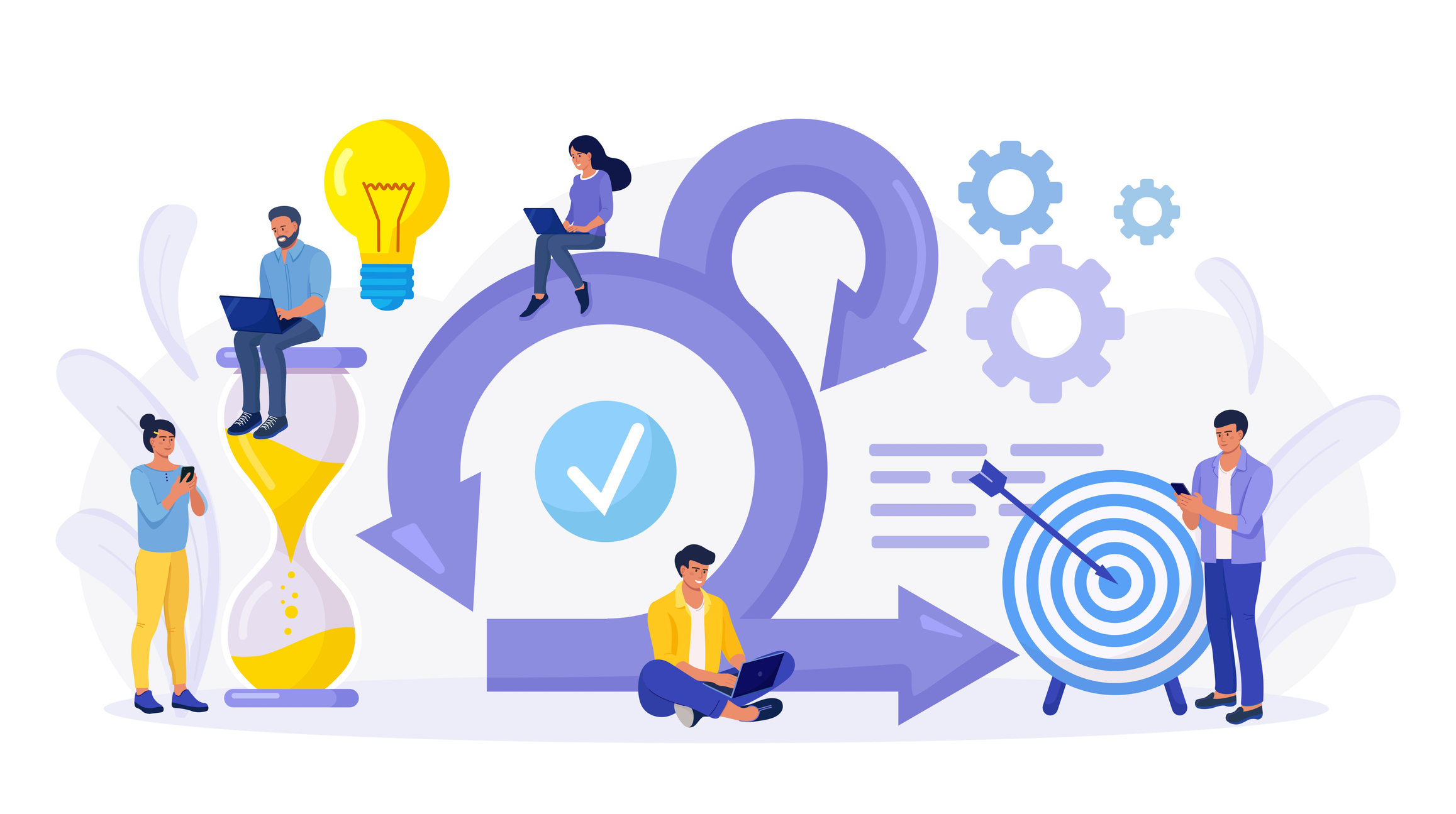Agile Project Management: Principles, Examples, and Frameworks
21 July 2025
4 months ago
In today’s fast-paced business world, traditional project management methods are often too rigid to keep up with change. To stay competitive and responsive, many organizations are adopting agile project management. This approach fundamentally changes how projects are delivered, focusing on collaboration, adaptability, and client satisfaction. But what are the core principles? What benefits can you expect? And which frameworks, such as Scrum or Kanban, are best suited to your context? Let’s explore all of this in detail.
Definition and Origins of Agile
Agile project management is based on short development cycles called sprints, designed to foster quick iterations and regular feedback. The approach gained traction in 2001 when 17 software experts published the Agile Manifesto, a set of values and principles aimed at replacing rigid development methods like the Waterfall model with something more responsive and human-centric.
Core Values and Principles of Agility
The Agile Manifesto is built on four core values that put people and results first:
-
Individuals and interactions over processes and tools
-
Working software over comprehensive documentation
-
Customer collaboration over contract negotiation
-
Responding to change over following a plan
These values are supported by 12 guiding principles, including continuous delivery of valuable software, regular retrospectives for improvement, and strong collaboration between business and technical teams.
Agile Frameworks: Scrum, Kanban, SAFe…
Scrum
Scrum is the most widely used agile framework. It is structured around specific roles (Scrum Master, Product Owner, Development Team) and recurring rituals like Sprint Planning and Daily Stand-ups. Scrum is ideal for complex, fast-changing projects where priorities must be constantly reassessed.
Kanban
Kanban offers a more visual and flexible approach, using a board divided into columns such as “To Do,” “In Progress,” and “Done.” This method helps teams manage workflow continuously and improve their processes through visual management and incremental changes.
SAFe, XP, DSDM, FDD…
Other frameworks adapt to different organizational needs. SAFe (Scaled Agile Framework) scales agility across large enterprises. Extreme Programming (XP) emphasizes code quality and testing. Lean focuses on eliminating waste. DSDM and FDD offer structured approaches for delivering business value quickly and effectively.
Benefits and Limitations of Agile Project Management
Agile provides clear benefits: faster delivery of value, enhanced flexibility, improved customer satisfaction, and increased team motivation. However, it requires a culture of collaboration, ongoing engagement from stakeholders, and may be challenging to implement in highly regulated or hierarchical environments.
Real-Life Examples
Agility is no longer limited to IT. It’s now being adopted across industries: digital marketing teams use agile for continuous A/B testing, HR departments apply it to onboarding processes, and finance teams use agile principles to adapt to regulatory changes. At Quai des Balises, for instance, a client structured their business software development using Scrum, delivering a Minimum Viable Product (MVP) in just six sprints over three months.
Want to go further? Visit our dedicated page:
Key Takeaways
-
Agile is based on 4 core values and 12 principles
-
Scrum and Kanban are the most popular frameworks
-
Agility fosters flexibility, collaboration, and continuous improvement
Frequently Asked Questions
The values are: people over tools, working software over documentation, customer collaboration over contracts, and embracing change over following a fixed plan.
Transparency, inspection, and adaptation — these ensure continuous process and product improvement.
Flexibility, short development cycles, strong collaboration, regular feedback, and empowered teams.
Agile is a methodology centered on iteration, adaptation, and teamwork, aimed at delivering functional solutions quickly and refining them based on user feedback.
Agile project management is more than just a trend — it’s a transformative approach that reshapes how teams collaborate, deliver, and innovate. By placing people, adaptability, and real-time feedback at the heart of the process, it helps organizations remain resilient and forward-thinking. For tailored agile implementation, trust Quai des Balises to guide your team step-by-step.